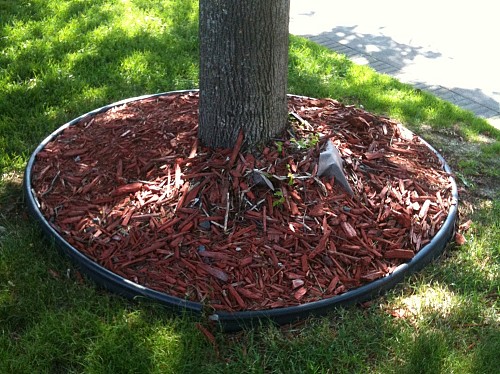Tree Care – DIY Or Call A Pro?
Did you know that – just like human beings -- trees can feel stress? Newly planted young saplings or any trees growing in an urban setting are especially vulnerable. And a stressed-out tree is not a healthy tree. So keep the trees on your property with a hearty helping of TLC. If you’re the green-thumbed type, you may want to do a lot of tree care yourself, although some of the work is better left to an arborist or professional landscaper. Read on to find out which tree care tasks you can DIY … and when to call a tree service pro.
Planting
DIY: Selecting and planting a young tree is a fun and rewarding DIY task. There’s something about planting a tree in your very own yard that says, “This is my home.” Get the kids on board and take plenty of photos. TIP: Before you dig a hole for your new tree, contact a one-call number to make sure you won’t be hitting any underground utility lines.
Call a Pro: For large-scale planting, such as when you’ve just moved into a new house with a lot of outdoor space, call a pro. Experienced landscape contractors have both the know-how and the equipment to install trees and other plants quickly and well. Even before planting begins, a professional landscaper will be able to remediate construction-damaged soil to ensure healthy growth.
Feeding and Watering
DIY: It’s not only garden plants that need fertilizer treatment. Trees also benefit from occasional feeding. Fertilize once annually, in April-May (after the last frost) or October for healthier, hardier trees, which will stand up better to storms and winds. As a DIYer, you can feed your trees by either broadcasting fertilizer or inserting a spike in the soil. You’ll have to water, as part of your tree care program, until young trees have been established for 2 years. Excessively dry weather may make watering older trees necessary, as well.
Call a Pro: Consult a landscaping expert to find out the right kind of fertilizer for your trees and soil type, as well as the best application method. Ask about when to water or use other methods of keeping roots moist, such as mulching. If you are busy (or forgetful!), consider setting up an ongoing tree service plan with your landscaper.
Protection
DIY: We humans are not the only tree lovers; many animals enjoy them too … as a tasty meal! Protect tender tree trunks from hungry deer and rodents with a store-bought plastic tree guard or a homemade version, fashioned from chicken wire or bark cloth. Shelter young trees and bushes from winter snowfalls with teepee-like frames or burlap wrappings.
Call a Pro: You’ll be better off enlisting the help of a pro when it comes to safeguarding your trees from ruthless insect pests, such as the emerald ash borer or spider mites. Another type of tree protection to ask your landscaper about is preventing collisions by mowers and other lawn care equipment. (Surrounding each tree with a circle of mulch and some form of barrier is often advised.)
Trimming and Thinning
DIY: As a home gardener, you might want to try your hand at Tree Trimming 101. Don’t just charge in there, though, or you may do your tree more harm than good. Slow down and start by learning the basic cuts. Tackle only pruning work that you can do standing safely on the ground.
Call a Pro: Leave major tree trimming jobs to the experts. A good rule of thumb is that any tree trimming work which requires a ladder -- or a lift -- is a job for tree service pros.
Besides branch trimming, fruit and nut trees need a special kind of tree care. They should be thinned every year in early summer; that means removing a certain amount of unripe fruit so that the remaining apples, plums, or pears will mature to a good size and flavor. We recommend having a pro do this at least the first time. If you watch and learn, you can try it yourself next year.
Laura Firszt writes for networx.com.
Looking for a Pro? Call us (866) 441-6648

Average Costs
Related Experiences

Rock Landscaping Adds Curb Appeal To An Arizona Home

Emergency Gas Valve Repair Restored Our Heat When Winter Hit Hard




